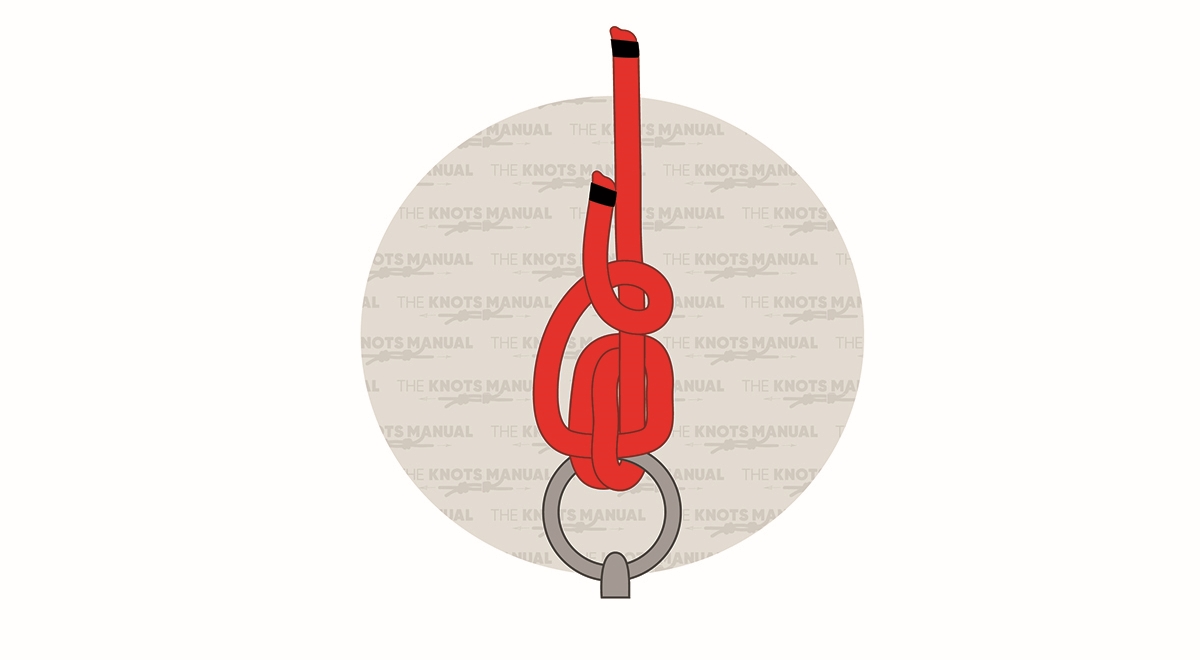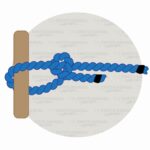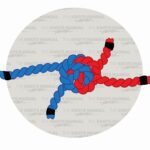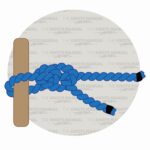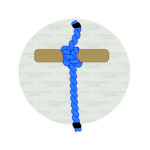The anchor knot is the most common knot used for securing anchors. While other knots are useful for anchors, none are as secure and effective as the anchor knot.
Anchor knots keep ropes strong and can handle both heavy and light loads. Besides anchors, these knots are useful for rock climbers and arborists.
Follow the directions below to learn how to tie a rope to an anchor.
What Is An Anchor Hitch?
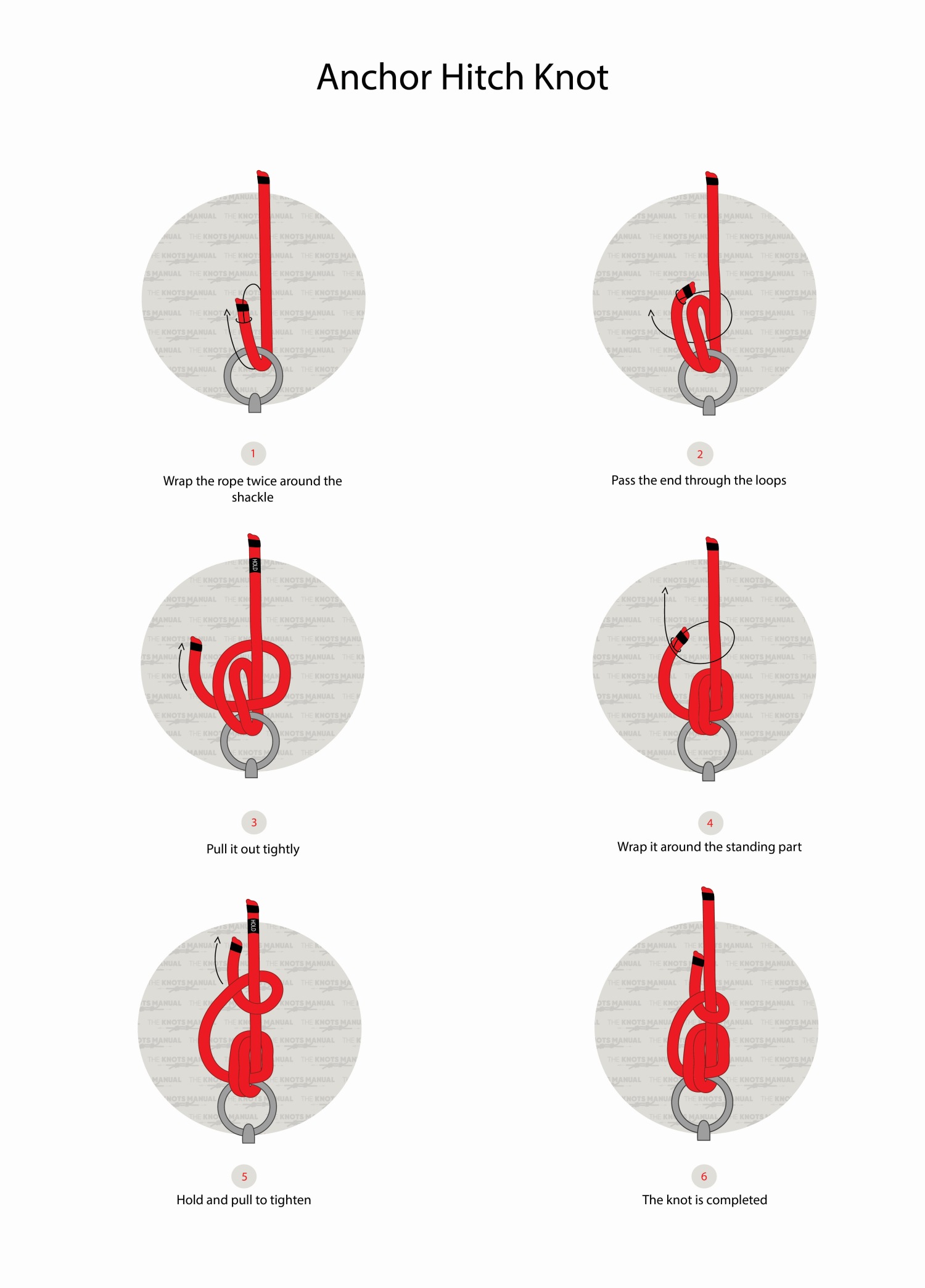
As the name suggests, these knots connect a line or rope to an anchor. These knots are most commonly used when boaters need a second anchor quickly. Boaters usually have at least one anchor set up and ready to go at all times. Yet, things can happen, and they may need to prepare a second one. The anchor hitch makes readying a second anchor quick and easy.
These knots are easy to tie and do not reduce the rope’s breaking strength by much.
They are about 10% stronger than the bowline knot. The bowline knot is similar but less effective for use with anchors.
Anchor hitches are very secure, making them the ideal knot for anchors. They remain strong even when alternating between heavy and light loads.
Natural VS Synthetic Materials
Using an anchor hitch with natural rope materials like manila or hemp is best. The knot is more likely to fail when used with modern, synthetic rope materials. Synthetic materials are more likely to make the knot jam.
Yet, many boaters choose synthetic. They are stronger and have better elasticity.
Making The Knot More Secure
Boaters can make this knot more secure and less prone to jamming by adding an extra turn.
Extra turns are unideal when working with small items. Avoid extra turns when working with anchor rings and small shackles.
Alternative Names
An anchor hitch knot also goes by the names “anchor bend knot” and “fisherman’s bend.”
The knot is a hitch, not a bend. Yet, it originally went by the name “anchor bend” because “bend” used to have a broader range of meanings.
How To Tie An Anchor Knot
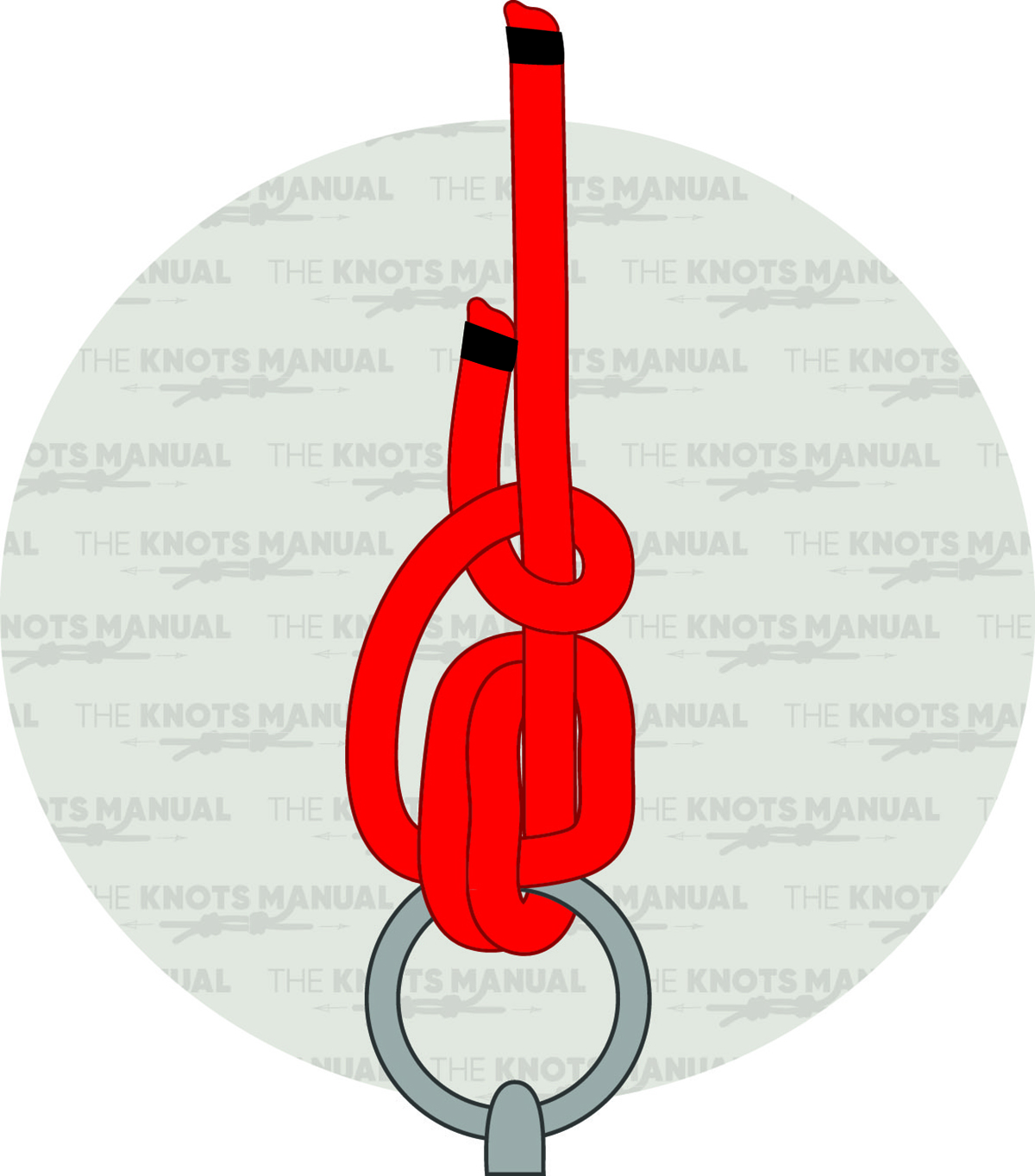
Boaters can tie an anchor knot in six simple steps: Begin with a shackle or swivel. These knots can be tied directly to the anchor, but we don’t recommend it.
Step 1:
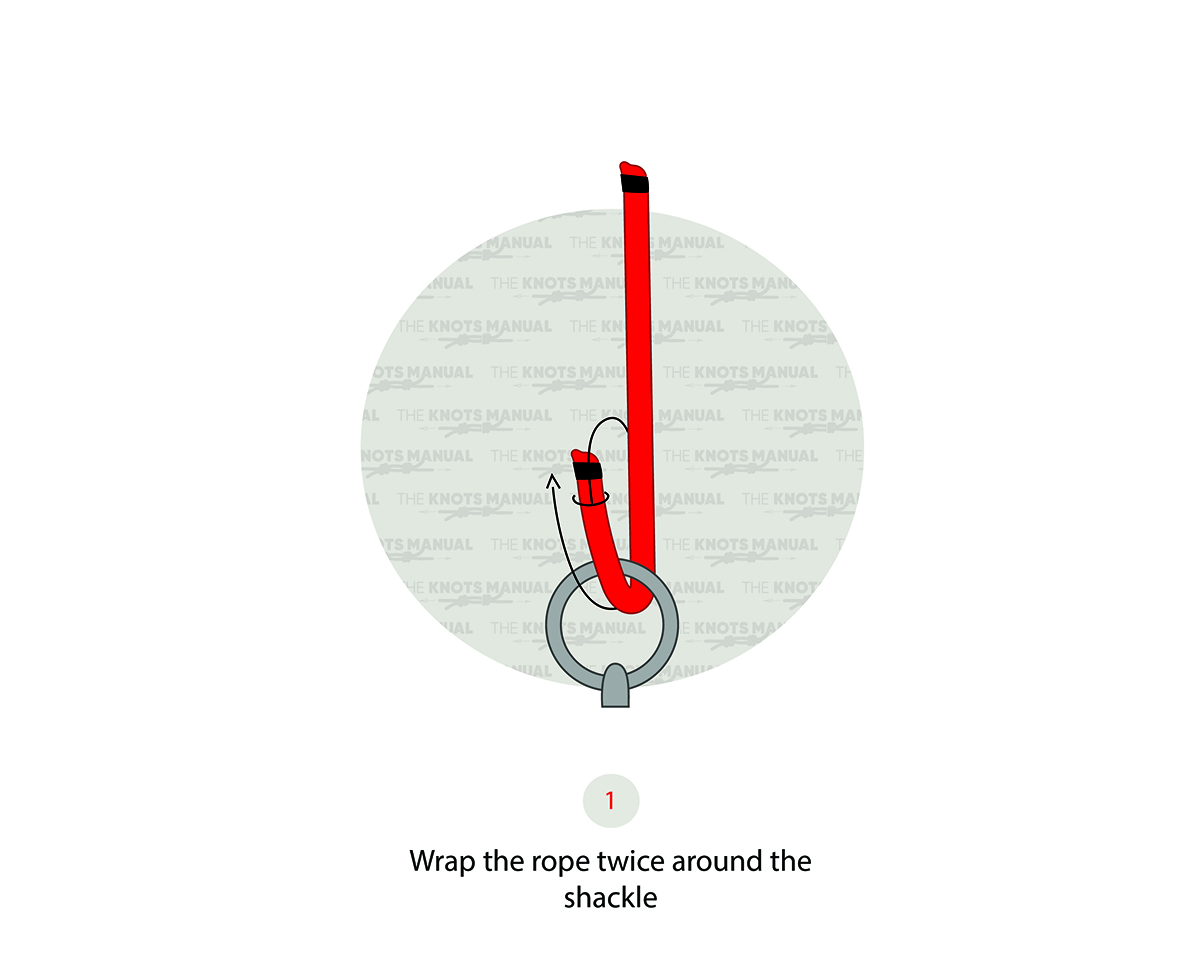
With the working end, wrap the rope around the shackle or swivel twice.
Step 2:
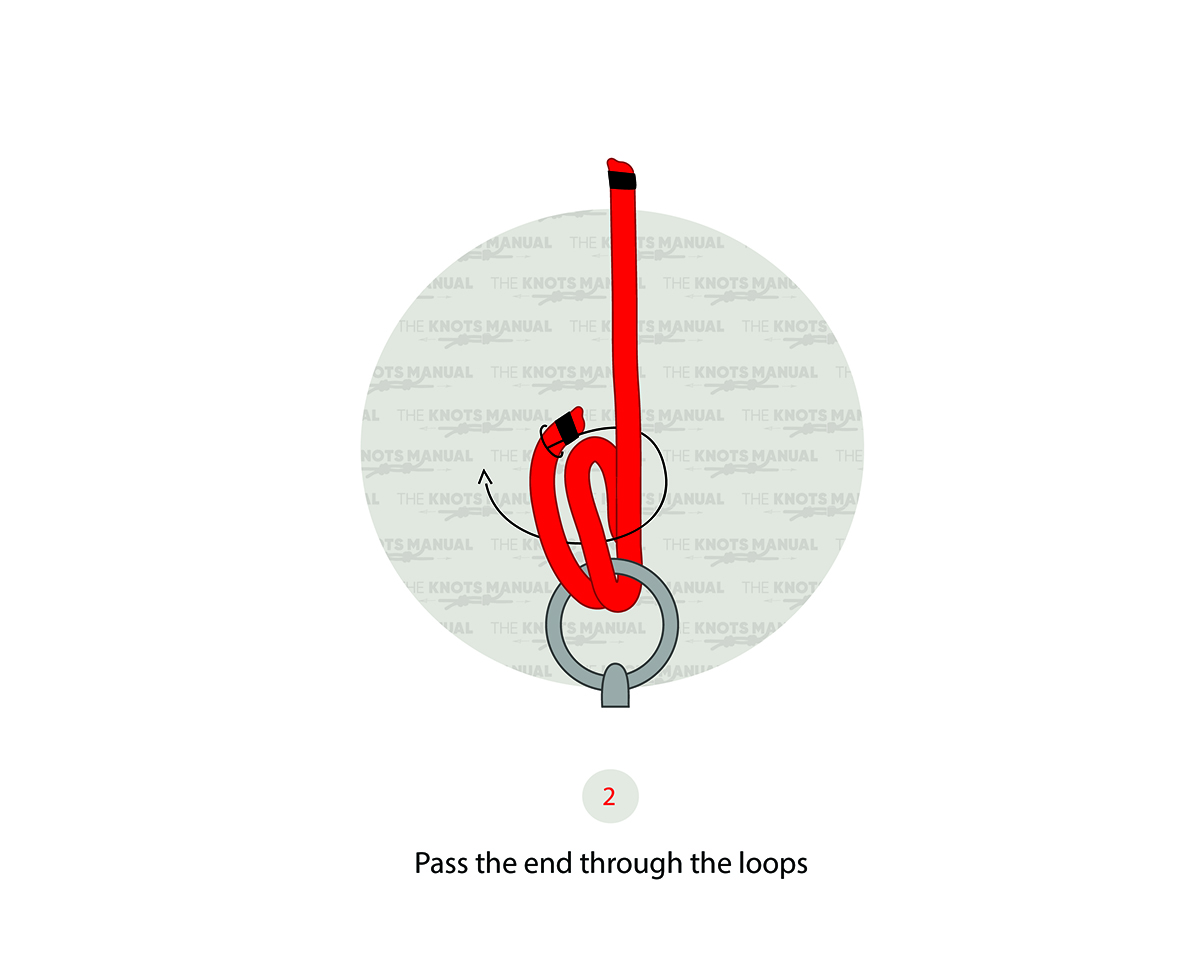
Pass the working end through the loops just created.
Step 3:
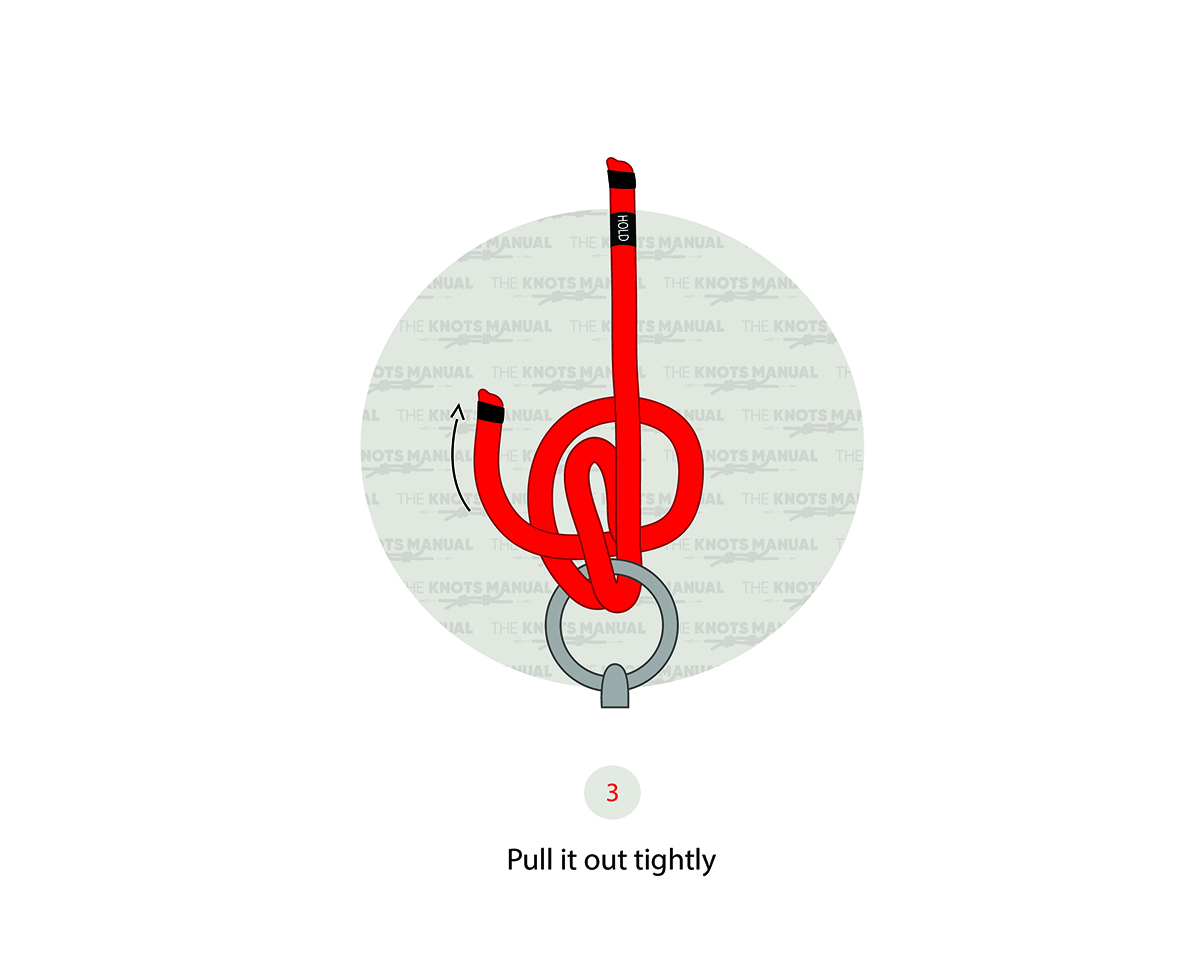
Pull the working end to tighten the knot.
Step 4:
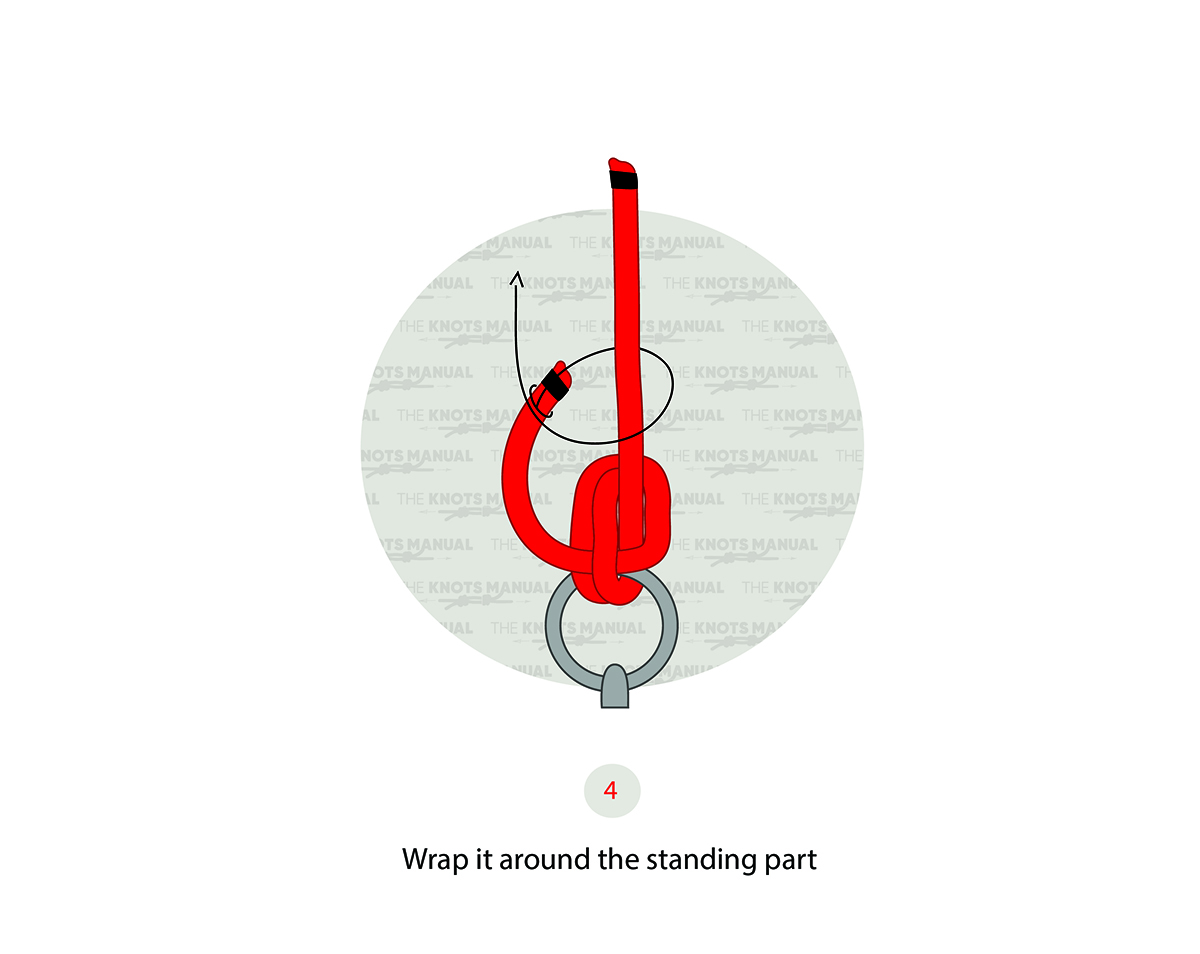
Wrap the working end around the rope’s standing part.
Step 5:
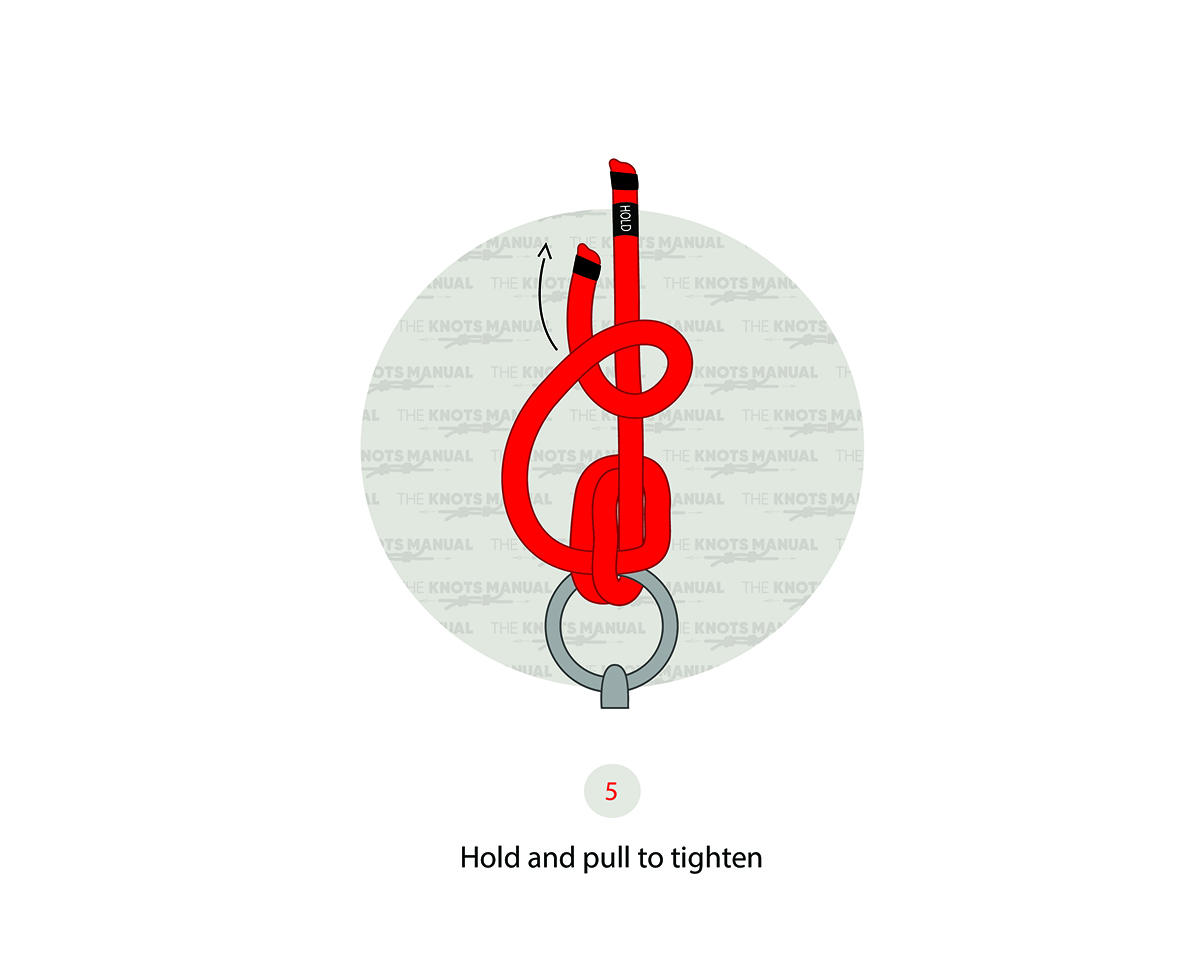
Hold the shackle with one hand and pull up on the working end with the other. Doing this tightens the knot.
Step 6:
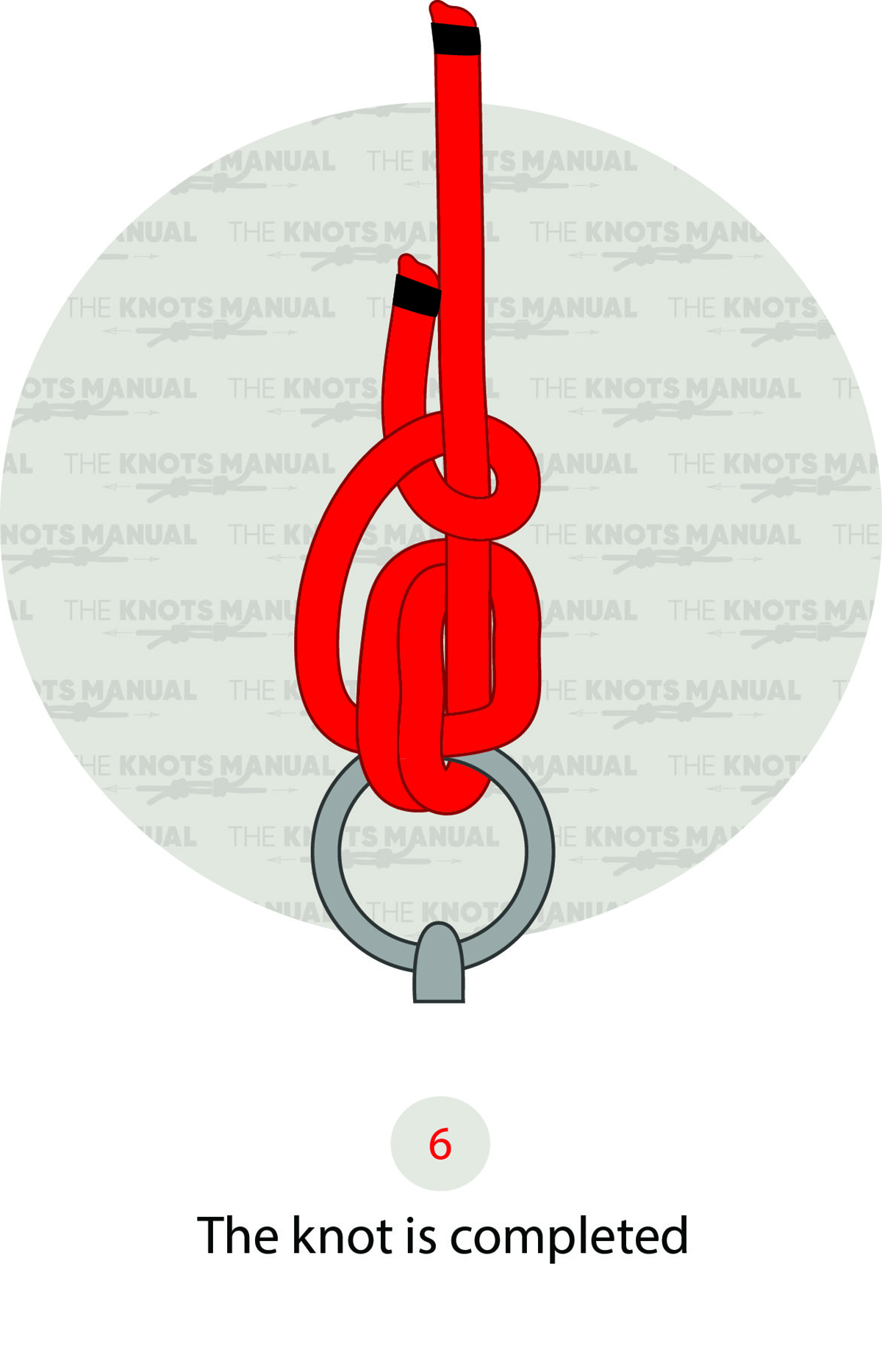
Join a standing line with seizing to the free end for extra security. Do this after making the hitch in step four. Users can also tie one side of a double fisherman’s knot on the line to use as a backup knot.
What Are The Uses Of An Anchor Hitch?
An anchor hitch is the best knot for an anchor. They attach a line to an anchor, securing large and small boats while on the water. They are even suited for drifting boats like kayaks and canoes.
Sailors use anchor hitches to tie anchors to warps. Warps are ropes used to moore vessels to a fixed point like a quayside.
Anchor knots are sometimes used to attach an anchor line to a ring.
Knots Similar To The Anchor Hitch
Bowline Knot: These knots form a loop at the end of a rope. They are easy to untie and do not slip or bind under heavy loads. Bowline knots are most often used to attach a mooring line to a post or ring.
Round Turn & Two Half Hitches: these knots are very similar to the anchor hitch. The round turn and two half hitches is nearly identical to the anchor hitch. The two knots are often used interchangeably. The difference is that the half hitch wraps around the standing part. In the anchor hitch, the half hitch passes under the first two turns in the knot.
Buntline Hitch: These knots are mostly used for securing the foot of a sail to buntlines. Sails frequently flap in high winds, causing violent shaking and jerking of the lines. The movement is detrimental to most knots but is beneficial to the buntline hitch. They are very secure knots that become tighter the more the lines shake.
Figure-8 On a Bight: These knots are ideal for anchoring during rock climbing. Climbers use these knots to connect a rope to a carabiner or harness. The user doubles the rope into a bight and ties the figure-8 knot.
Double Figure-8 Knot: These knots are ideal for rock climbing and mountaineering. They create a double loop in the center of a rope and are very safe. Double figure-8 knots sometimes act as seats. They also allow a load to spread out across two anchor points.
Cow Hitch: These knots are practical for securing a rope to a post, rope, or other objects. They are not very secure and are only meant for temporary use. It gets the name “cow” hitch because they are often used to secure animals like cows.
Half Hitch: These knots are usually used as backup knots. They are rarely used alone as they are quite insecure. Yet, they increase security when combined with other knots. Two half hitches are safer and are good for tying a rope to a tree, boat, post, or other objects.
Rolling Bend: These knots are often used for moving posts, logs, and other objects.
Timber Hitch: These knots are useful for tying a rope to a tree, post, or other cylindrical objects. These knots are ideal because they are easy to tie and untie, even after bearing a heavy load. They are non-slipping knots, and they do not jam.
FAQs
What Is An Anchor Used For?
An anchor is a nautical device usually comprising a heavy metal, like iron. It attaches to a boat or ship by a rope, cable, or chain.
Boaters lower the anchor into the water. It rests along the floor of the ocean, river, lake, or other water bed. The anchor’s weight holds the vessel in place and prevents it from moving.
Anchors have two curved arms. The anchor drags along the seabed, and one of the arms catches on the substrate. The arm digs into the sea floor, holding the anchor in place.
What Is The Best Anchor Rope?
Nylon is one of the best choices of rope to use for anchors. It is the strongest type of rope for common use. Yet, it is elastic enough to handle large loads and is shock-resistant. Nylon is affordable, easy on the hands, and is UV-resistant. It is also light and flexible, and it sinks. Nylon is the most common type of rope buyers find in marine stores.
Can You Use Anchor Knots For Climbing?
Yes, rock climbers and mountaineers sometimes use the anchor hitch with their carabiners.
Similarly, arborists use anchor hitches to help them climb trees.
